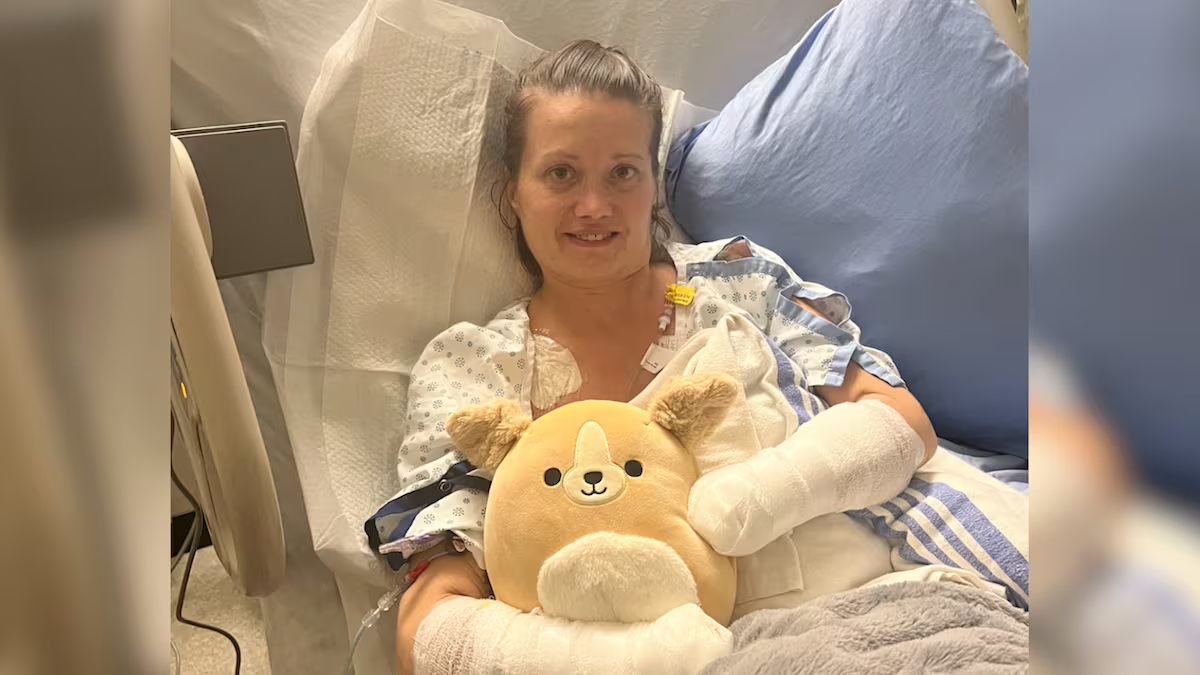An Alberta woman is rebuilding her life from the ground up after a rare and fast-moving infection led to the amputation of both her hands and feet — an ordeal she says began with what felt like routine neck pain.
Jane Haley, 41, from Grande Prairie, told CTV News she initially assumed she was experiencing a flare-up of her TMJ disorder. But within hours, her symptoms changed dramatically. “The left side of my neck started hurting, and then the left side of my chest started hurting … that was all different,” she said.
By the time she reached the emergency room on Aug. 24, her condition deteriorated with alarming speed. Her blood pressure and oxygen levels plummeted, and doctors rushed her into intensive care. She was placed on life support and kept in a medically induced coma for eight days.
When she finally woke up, her hands had turned black. Doctors explained that she had developed invasive Group A streptococcus (iGAS) — a rare but extremely dangerous condition that had triggered septic toxic shock syndrome. The infection caused severe tissue death in her limbs. Soon, her feet began turning black as well.
“It came down to life or limbs,” Haley said. “They chose life, and I’m very grateful for that.”
Group A strep usually causes minor illnesses such as strep throat, but when it invades deeper tissues or the bloodstream, it can become life-threatening. Health Canada reports that iGAS cases have been rising steadily, surpassing 5,000 cases in both 2023 and 2024, the highest on record. Dr. Donald Vinh, an infectious disease specialist at McGill University, says the infection can strike healthy adults without warning. With more than 250 known strains — some far more aggressive — predicting who is most vulnerable is difficult.
“If you have fever or pain, and rapidly spreading redness, you’ve got to get that checked out as soon as possible,” Vinh warned.
Haley says she never realized she was seriously ill. “I had no idea that I was sick,” she said. “I would just tell people to know your body and listen to it.”
Now receiving care at Edmonton’s Glenrose Rehabilitation Hospital, she is beginning the long process of learning to navigate the world with prosthetic arms and legs. Despite the challenges, she has already found ways to regain some independence — including using an adaptive device to send text messages from her hospital bed.
Her positivity, she says, comes from the unwavering support of her mother, family, and friends. “I don’t want to dwell on what could’ve been,” Haley said. “I’m just positive, because that way, good things happen and productive things happen.”

